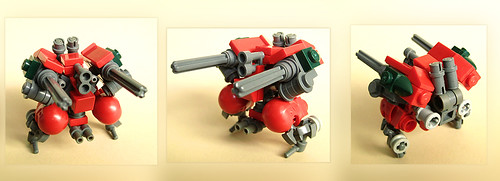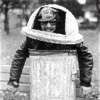As many of you probably know, I built a bot a little while ago that got a lot more attention than I expected. Since the, there have been other versions by other builders (as Mike stated here, and there are more lurking around). I have also received emails from people asking to buy it...
For those of you who have been asked to sell one of your models, you will know where I'm coming from when I say it feels strange to give away one of your creations for cash. I declined to sell, but I took a good hard look at the bot to get an idea of how much it would cost. I was astounded by the piece count- 83 pieces! In just that little robot! What did I put into that little guy that made him so parts-intensive? Well, here comes...
MicroRobots; A Short Guide!
What are MicroRobots?
Small, super-detailed robots with articulation (though sometimes not much). Some examples:
The above-mentioned
VUMF
Lobar Lifter
Bullshark
Bley Minion
Sharkie
(From Me and Tim 'Spook' Zarki, the final by Danny Rice)
Those are examples that popped into my head, but there are lots more by other builders.
Find the Parts!
Part use is key for things this small. If you tinker for a while, you will quickly find what parts are useful for building these guys. They must be small, in useful colors, and have maximum possibility for connections to be made. The key parts I have found:
- The ever-famous Travis Brick
- "Doc-oc" claws
- Headlight Brick
- Pneumatic T-piece
- And for details, the Minifig Hand

Then, the idea!
Every lego builder knows how important it is to get a good building idea, and the same with the robots. Whether that ideas originates from some cool new [body part] design, concept art, or inspiration from another person's creation, go for it. For my three mechanoids, they stemmed from ideas on building the legs with very small feet. That goes even farther back; The Lobar was inspired by golems in the Wii video game Metroid Prime 3. The split feet on the industrial robo were inspired by this cyborg, drawn by the artist Keith Thompson (who, by the way, has a nice robot gallery here). So go find something that inspires you to build!







2 comments:
Very nice post, Lukas. I might add that O-wrenches are another vitally useful piece.
I second that. ^
Great idea to do an article on this.. I want to go build more now. XD
Post a Comment